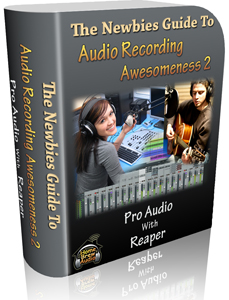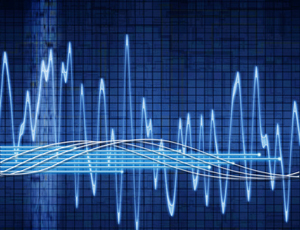Did you know that not all equalization (EQ) is the same? BTW, if you need a reminder of what EQ is, see our article What is Equalization, Usually Called EQ? Anyway, yeah – usually we work with linear phase EQ. But there is also a thing called minimum-phase equalization. Here is a great article by Samuel O’Sullivan that will explain it all to you.
Read the full thing here: http://www.prosoundweb.com/article/in_the_studio_linear_phase_vs._minimum_phase_eq_includes_video
Recording Tips and Techniques
Saving A Pro Tools Session For The Mix Engineer
The recording engineer is actually more than one job. It is three jobs at least, the tracking job, the mixing job and the mastering job. I wrote about this in the article: Recording Engineer, Mix Engineer and Mastering Engineer – Oh My. With that in mind, if your project requires all three distinct jobs – most music recording projects will – it might be handy to know how to save things at the end of one job before passing it on to the next engineer, assuming you aren’t doing everything yourself. If you are using Pro Tools , you might find this article I just came across to be useful.
It’s very short – just a checklist, really. But a very useful one. Check it out here: http://mixmasteredstudios.com/2012/07/save-protools-session-for-mix-engineer/
Newbies Guide To Audio Recording Awesomeness 2 Is Finally Here

Yes, after far too long a time, it is finally here. Today The Newbies Guide To Audio Recording Awesomeness 2: Pro Recording with Reaper, is available! This new course raises things to a whole new level, taking you well into the realm of professional quality audio recording using the incredible software called Reaper.
The first in the “Newbies Guide” series, The Newbies Guide To Audio Recording Awesomeness 1 (which is what it shall be known from now on) focused on getting you started if you had no skills at all and no budget at all for gear. The new course takes you a LOT further down the road using decidedly professional software (even though the price is still amazingly low) called Reaper.
The assumption about having little-to-no audio recording experience is pretty much the same, but the budget for gear and software will need to be a little higher (though nothing like what one might imagine) – say, $60 for Reaper and less than $100 for a USB mic.
Here is a break-down of the lessons:
- Lesson 1 – Recording “Level-Up”: USB Mic and Reaper Software
- Lesson 2 – Your 1st Recording With the Upgraded Studio (Voice-Over w/Music)
- Lesson 3 – Producing (Mixing and Rendering) Your First Recording
- Lesson 4 – Voice-Over Recording Tips: Split 1 Audio Item Into Many – Auto Trim/Split
- Lesson 5 – Voice-Over Recording Tips: Quickly Reposition & Align Multiple Audio Items
- Lesson 6 – Voice-Over Recording Tips: Multiple Voices/Conversation
- Lesson 7 – Saving one file as lots of Little Files with Their Own File Name
- Lesson 8 – Multi-Track Recording: The “Killer App” Of Computer Recording
- Lesson 9 – Multi-Track Recording: Singing Harmony With Yourself (or Others)
- Lesson 10 – Multi-Track Recording: Vocal Doubling
- Lesson 11 – Intro To MIDI: The Magic Music Helper (3 part lesson)
- Lesson 12 – Loops
- Lesson 13 – EQ and Frequency
- Lesson 14 – Recording a Pop Song: The “My Eyes” Tutorial
And the price of 18 videos of pure awesomeness? Only $47. I know, right?!
CLICK HERE to buy!
Adjusting Guitar Pickups For Better Sound
Here is an article that gives you some tips for adjusting your guitar pickups for better sound. Do you know if your guitar’s pickup is out of alignment? Probably not. Guitarists are usually pretty familiar with what kinds of tone changes they can get by turning the knobs and flipping the switches on theirs guitars. But very few of them ever dare to mess with the actual pickups themselves. I believe this is kind of a “hey-that-isn’t-a-user-fisable-thing” issue; sort of like opening up the back of your computer or digging around inside your car’s engine. Users are happy to play with controls they are obviously meant to use, since they assume the manufacturer intended them to, and therefore not much damage can result. but once you crack open the box, all bets are off.
Well this article shows you how to crack open (well, not literally) the pickups of a guitar to give you more control.
Read the full thing here: http://en.audiofanzine.com/guitar-pickup/editorial/articles/how-to-adjust-your-guitar-pickups-for-best-sound.html
Phase and Frequency and Amplitude – Gesundheit!
 As with so many things in the audio world, there are lots of important concepts that are mired in complex terminology that make it hard to grasp if you are not an electrical engineer or do not possess an advanced degree in acoustics and/or physics and pure math. In the article I just read, the author talks about the important relationships between phase, frequency, and amplitude. And of course these things mean very little unless you also throw in another variable – time.
As with so many things in the audio world, there are lots of important concepts that are mired in complex terminology that make it hard to grasp if you are not an electrical engineer or do not possess an advanced degree in acoustics and/or physics and pure math. In the article I just read, the author talks about the important relationships between phase, frequency, and amplitude. And of course these things mean very little unless you also throw in another variable – time.
Yeah, if I didn’t know better I’d think i was having one of those nightmares where you’re back in school studying for a physics class test on wave mechanics. You remember your wave mechanics, right? The terms phase, frequency and amplitude were the staple concepts in those chapters. Well, guess what? It turns out that chapter was going to have real-world application to your foray into audio recording. Exciting right?
Read more about these things and how they relate to your audio at the following article:
http://www.prosoundweb.com/article/understanding_relationships_bringing_clarity_to_phase_frequency_and_time/?utm_source=feedburner&utm_medium=feed#When:21:09:48Z